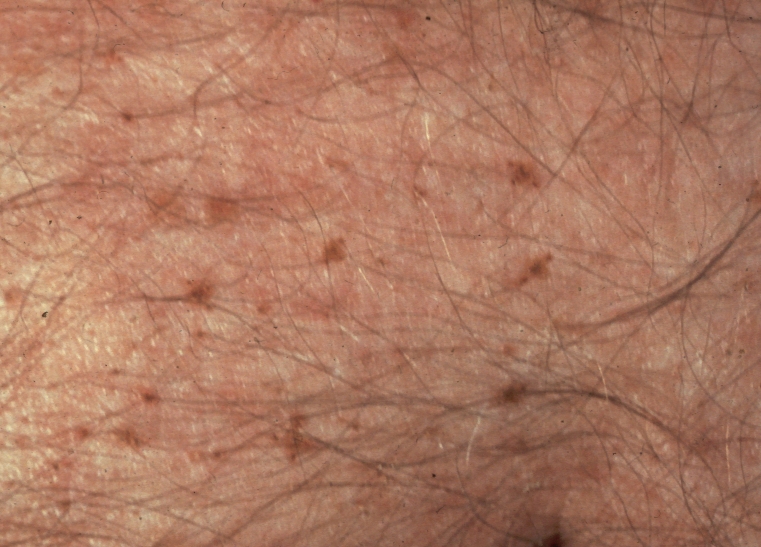Pediculosis pubis: Difference between revisions
Jump to navigation
Jump to search
Dima Nimri (talk | contribs) |
Dima Nimri (talk | contribs) |
||
| Line 13: | Line 13: | ||
==Classification== | ==Classification== | ||
Infestation with pubic lice may be classified according to the site affected into:<ref>{{cite journal |author=N. P. Manjunatha, G. R. Jayamanne, S. P. Desai, T. R. Moss, J. Lalik & A. Woodland |year=2006 |title=Pediculosis pubis: presentation to ophthalmologist as pthriasis palpebrarum associated with corneal epithelial keratitis |journal=[[International Journal of STD & AIDS]] |volume=17 |issue=6 |pages=424–426 |doi=10.1258/095646206777323445}}</ref> | |||
* ''Phthiriasis pubis'': infestation of [[pubic hair]] with pubic lice | |||
* ''Phthiriasis palpebrarum'': infestation of [[eyelashes]] with pubic lice | |||
==Pathophysiology== | ==Pathophysiology== | ||
Revision as of 20:23, 7 March 2017

For patient information click here
This page is about clinical aspects of the disease. For microbiologic aspects of the causative organism(s), see Pediculus pubis.
Editor-In-Chief: C. Michael Gibson, M.S., M.D. [1]; Associate Editor(s)-in-Chief: Kiran Singh, M.D. [2]
Synonyms and keywords: Pubic louse infestation; Phthiriasis pubis
Overview
Historical Perspective
- Pediculosis pubis was reported in the literature as early as 1946.[1]
- In 1946, Andrew G. Franks describes the use of DDT in the treatment of pediculosis pubis.[1]
Classification
Infestation with pubic lice may be classified according to the site affected into:[2]
- Phthiriasis pubis: infestation of pubic hair with pubic lice
- Phthiriasis palpebrarum: infestation of eyelashes with pubic lice
Pathophysiology
Causes
Differentiating Pediculosis pubis from other Diseases
Epidemiology and Demographics
Risk Factors
Natural History, Complications and Prognosis
History and Symptoms
Physical Examination
Laboratory Findings
Other Diagnostic Studies
Medical Therapy
Surgery
Primary Prevention
Secondary Prevention
References
- ↑ 1.0 1.1 FRANKS AG, DOBES WL (1946). "DDT in the treatment of scabies, larva migrans and pediculosis pubis". Arch Derm Syphilol. 53: 381. PMID 21026349.
- ↑ N. P. Manjunatha, G. R. Jayamanne, S. P. Desai, T. R. Moss, J. Lalik & A. Woodland (2006). "Pediculosis pubis: presentation to ophthalmologist as pthriasis palpebrarum associated with corneal epithelial keratitis". International Journal of STD & AIDS. 17 (6): 424–426. doi:10.1258/095646206777323445.